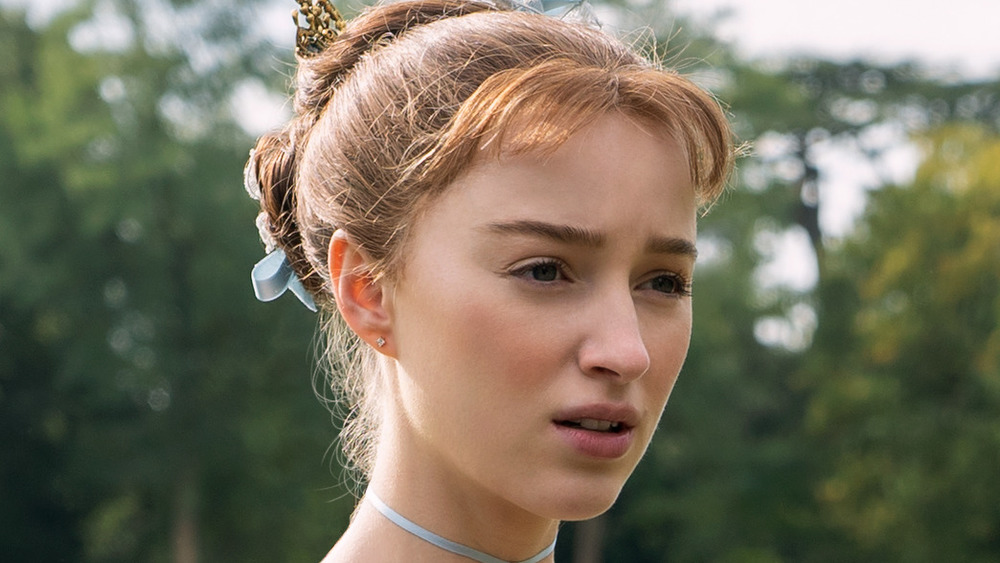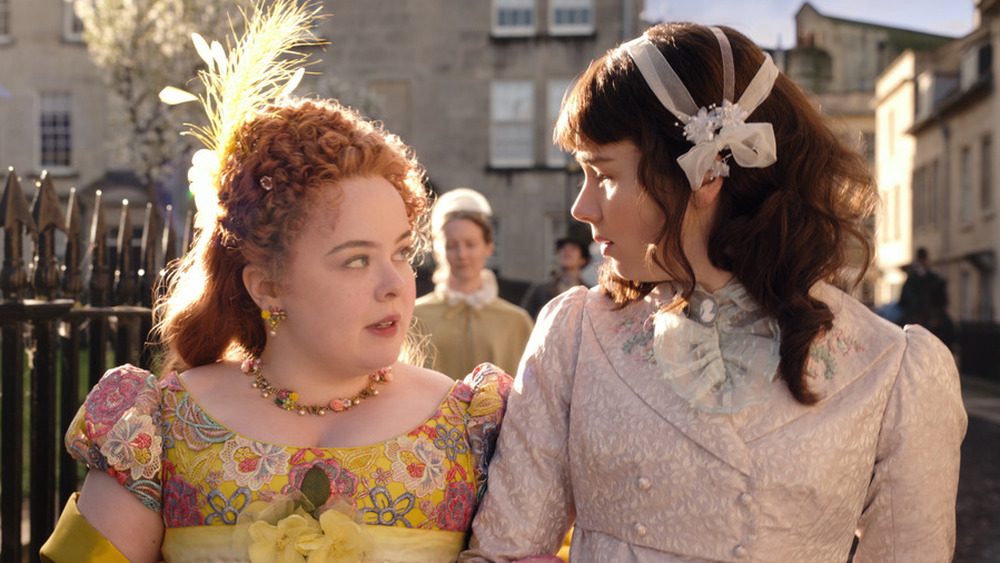Was This The Inspiration For Bridgerton's Lady Whistledown?
Everyone's lives are thrown into chaos when Bridgerton's Lady Whistledown starts circulating her gossip rag. Voiced by Julie Andrews, Lady Whisteldown's missives drive the plot in Netflix's regency romance and provide narration, in the same style as Gossip Girl. But Julia Quinn's Bridgerton novels had Lady Whistledown as a character before the Gossip Girl books were ever published, and the real life inspiration for Lady Whistledown long predates the CW soap.
Bridgerton's plot kicks off when Lady Whistledown begins circulating a pamphlet documenting the comings and goings of London's elite. Daphne Bridgerton, played by Phoebe Dyvenor, combats the gossip columnist's assertion that her prospects are dimming by teaming up with Simon Bassett, Duke of Hastings (Regé-Jean Page) to fool all of London into thinking the two are courting. Daphne will seem more attractive as a potential mate, and Simon will appear unavailable to all the gold-digging mothers trying to set their daughters up with a duke.
Lady Whistledown's gossip sheets continue to wreak havoc on London, prompting the Queen (Golda Rosheuvel) and Eloise Bridgerton (Claudie Jessie) to try and discover her secret identity. By the end of the season, we know who Lady Whistledown is, but history suggests there's actually a real-life basis for the character.
Female authors wrote under pen names throughout history
Women writers of history often wrote pseudonymously. Many had fake male names under which they wrote: Mary Ann Evans wrote as George Eliot starting in 1859, and Louisa May Alcott wrote gothic thrillers under the name A. M. Barrett in the 1860s. According to the Thriftbooks blog, the Brontë sisters wrote originally as the Bell Brothers. Wuthering Heights was originally attributed to Ellis Bell, and Jane Eyre was published the same year by Currer Bell. Still, publishing great novels isn't the same as writing a gossip mag. While tabloid journalism may seem like a modern invention, there's actually a strong historical precedent for Lady Whistledown's pamphlet. "Newspapers were plentiful during the Regency Era, with most of the stories published centering on politics, crime, fashion, infidelity, or royal doings," Geri Walton told Town & Country.
Lady Whistledown reminds historian Catherine Curzon of Mrs. Crackenthorpe, a fake name for a real world gossip columnist of the early 1700s. "Mrs. Crackenthorpe was the anonymous author behind the Female Tatler, which was published from 1709 to 1710," Curzon says. "It's a gem of satire, remarkable for being intended for women, and with a primary aim to educate — often through sharp observation — but with an eye for gossip too." Lady Whistledown seems to favor gossip over education, but there's always room for a more woke Whistledown in Bridgerton season 2.

